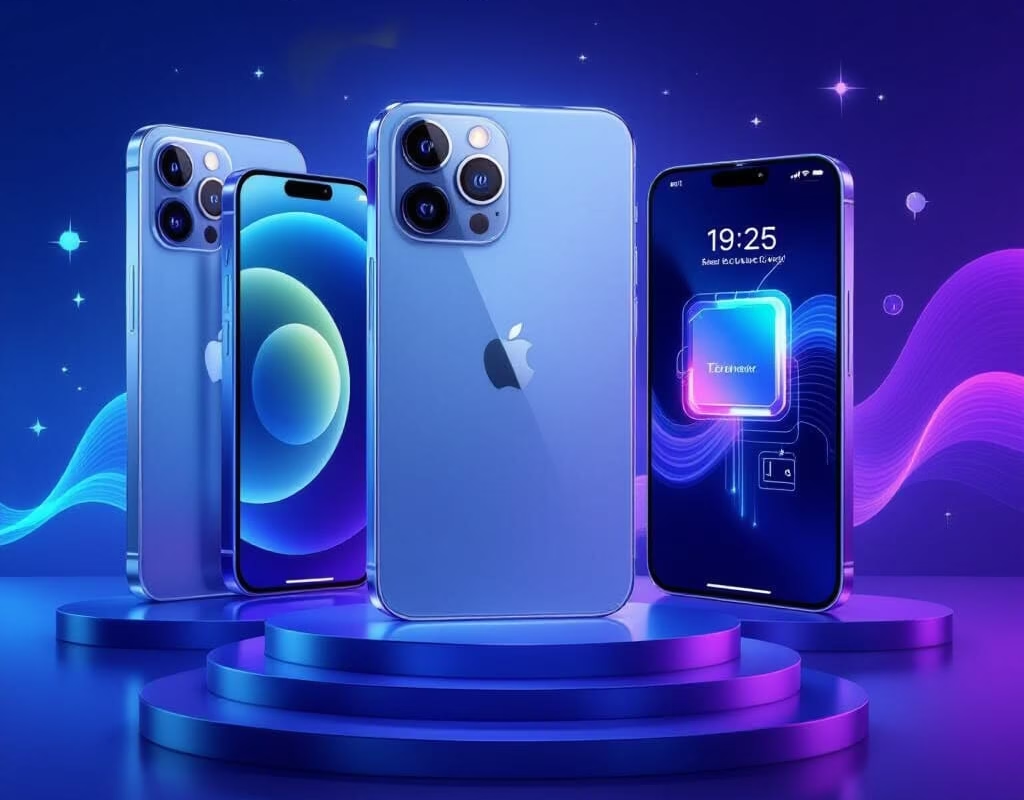When it comes to investing in a flagship smartphone in 2025, users expect nothing short of technological excellence, cutting-edge design, and enduring value. The choices at the top are more competitive than ever, with giants like Apple, Samsung, Xiaomi, and Google pushing boundaries and redefining the premium experience. In this blog, each heavyweight flagship is dissected—Apple iPhone 17 Pro, Samsung Galaxy S25 Ultra, Xiaomi 15 Ultra, Samsung Galaxy Z Fold 7, and Google Pixel 10 Pro—across critical metrics that matter: design, performance, cameras, software, battery, and special features. Who will claim the crown for 2025, and which phone best fits for high-end buyers? Dive in for the complete comparison.
Premium Contenders: Quick Overview
Apple iPhone 17 Pro: Apple’s latest with an A19 chipset, under-display Face ID, and significant leaps in camera AI and ecosystem integration.
Samsung Galaxy S25 Ultra: The ultimate S Pen flagship, boasting a 200MP camera, Snapdragon 8 Gen 3, and a titanium build for power users.
Xiaomi 15 Ultra: Camera enthusiast’s dream with Snapdragon 8 Gen 4, Leica quad-cam, and a QHD+ AMOLED display.
Samsung Galaxy Z Fold 7: Seventh-gen foldable with ever-improving considerable screen experience, multitasking, and Galaxy AI 2.0.
Google Pixel 10 Pro: Google’s answer to AI-first mobile computing, featuring Tensor G5, top software support, and unique camera AI.
Design and Build Quality
The iPhone 17 Pro arrives with Apple’s signature premium feel—polished titanium chassis, under-display Face ID for a clean look, and the reassuring heft every iPhone flagship fan expects. Its design isn’t radical but represents Apple’s iterative perfectionism, offering IP68 water resistance, scratch-resistant Ceramic Shield, and a choice of understated luxury colours.
Samsung’s Galaxy S25 Ultra takes another route, boasting a bolder, slightly boxier silhouette with industrial cues inspired by the Note legacy. The new titanium body adds strength without unnecessary weight, and S Pen integration remains flawless for business and creative buffs. Samsung’s traditional stylus compatibility continues to appeal uniquely to power users—no competition there among rival flagships.
Xiaomi 15 Ultra stands out with a camera-inspired rear design that’s iconic in enthusiast circles and a robust build quality. The device feels purposefully crafted for photographers with its dedicated accessory kit. The QHD+ display, Dolby Vision support, and tactile frame appeal to those prioritising aesthetics and ergonomics.
The Z Fold 7 is all about futuristic engineering—delivering a full, nearly crease-free 7.8″ display when unfolded and a slim, durable form when closed. Refined hinge technology and AI-driven multitasking upgrades make this foldable a delight for those eager to blend productivity with entertainment. It is IPX8-rated for water resistance, a feat for a foldable.
Google Pixel 10 Pro champions functional minimalism, with a satin-glass back, robust chassis, and the now-iconic Pixel visor camera bar. It feels balanced and less slippery compared to its peers, while its colourways are playful but always premium. The IP68 water resistance and reinforced frame make it practical for daily use.
Display Technology
Every device here represents the best display technology that its respective brand offers.
iPhone 17 Pro: Super Retina XDR, 6.7″, up to 120Hz ProMotion, incredible HDR rendering—arguably the best colour accuracy and outdoor readability.
S25 Ultra: Dynamic AMOLED 2X, ultra-high brightness, 120Hz adaptive refresh, and Dolby Vision—cinematic visuals, even outdoors.
Xiaomi 15 Ultra: QHD+ LTPO OLED, 12-bit colour, dynamic 120Hz, and Dolby Vision—among the best for video content and pro calibration.
Z Fold 7: Foldable AMOLED redefines immersive viewing with minimal crease, optimised for multitasking and supported by an improved under-display camera.
Pixel 10 Pro: 6.8″ OLED, 120Hz, vibrant colours, excellent uniformity—among the top, though arguably not as super-bright or contrast-rich as Samsung or Apple.
Camera Performance
The 2025 flagship race is heavily contested in camera capabilities, especially as computational photography and AI continue to advance.
iPhone 17 Pro: Debuts an 8x periscope zoom, improved Photonic Engine, and AI-guided portrait enhancements. Videos benefit from ProRes, Dolby Vision, and superior stabilisation. The LiDAR scanner adds depth for AR and professional-grade focus—Apple excels as an all-rounder, especially in video.
Galaxy S25 Ultra: 200MP wide camera, improved nightography AI, dual-telephoto, and raw capture mean incredible versatility. While Samsung leads in zoom range and high-res detail, especially for moon and wildlife photography, low light and colour tuning are now closer than ever to Apple.
Xiaomi 15 Ultra: Leica-powered quad-cam setup, ultra-large 1-inch sensor, dual telephoto lenses (mid and periscope), and class-leading macro mode. It is a photography purist’s dream, offering manual controls and an optional pro photography kit. Still images, detail, and creative flexibility often best the competition, but video processing is a fraction behind.
Z Fold 7: Improved sensors and new AI-driven enhancements for foldable photography—versatile but doesn’t surpass the Ultra’s or Xiaomi’s absolute photographic output. What sets it apart is flexibility: use the fold as a tripod for unique perspectives.
Pixel 10 Pro: Pioneers AI photo correction, “Remove Passersby,” and Magic Editor tools. While the hardware (100x AI zoom) is upgraded, Google’s true strength is computational wizardry for casual shooters, delivering true-to-life skin tones, low-light magic, and effortless editing features. However, when it comes to intricate details or manual controls, it falls just shy of Xiaomi or Samsung.
Performance and Software
iPhone 17 Pro: The A19 Bionic chipset is industry-leading for both efficiency and raw power. iOS 19 introduces advanced AI, smoother multitasking, and years of software support, which is unmatched in terms of security and updates.
Galaxy S25 Ultra: Snapdragon 8 Gen 3 or Exynos variant (region-dependent), paired with Samsung’s refined One UI 7, offers speed and feature richness. Galaxy AI 2.0 adds smart translation, productivity tools, and image editing; S Pen integration for note-taking/creative tasks still reigns supreme.
Xiaomi 15 Ultra: Snapdragon 8 Gen 4, HyperOS, and the most robust hardware combo ensure snappy performance. Thermals are greatly improved, and battery longevity stands out. However, some overheating is noted under heavy camera and videography loads.
Z Fold 7: Same processor as S25 Ultra, but tailored for seamless multitasking with up to 4 apps onscreen, and fold-specific UI enhancements. Galaxy AI assists with drag-and-drop functionality, auto-formatting, and meeting summaries—features exclusive to foldables.
Pixel 10 Pro: The Tensor G5 chip lags slightly in benchmarks but compensates through adaptive AI, exclusive features, and Google’s promise of seven years of Android upgrades. Gemini AI integration is world-class for live transcription, summarisation, and on-device AI creative tools.
Battery & Charging
iPhone 17 Pro: Delivers all-day life even with heavy use, fast MagSafe wireless charging, and optimised battery health features.
S25 Ultra: Offers efficient power management for its size but slightly trails Xiaomi and iPhone in screen-on time; ultra-fast wired and wireless charging available.
Xiaomi 15 Ultra: 120W ultra-fast wired charging and exceptional long-life battery chemistry—ideal for power users constantly on the move.
Z Fold 7: Enhanced cell tech compensates for previous foldable battery woes, easily lasting a standard workday even with frequent unfolding.
Pixel 10 Pro: Improved efficiency and better screen-on time than prior Pixel models, but doesn’t outlast iPhone or Xiaomi under hefty load; charging speeds are reasonable but not chart-topping.
Special Features & Ecosystem
Apple’s ecosystem integration is unparalleled, from AirPods to Mac and iPad, and the Health/Fitness suite continues to shine.
Samsung’s DeX, S Pen, seamless Windows integration, and SmartThings connectivity carve out an unmatched business and smart home territory.
Xiaomi appeals to tinkerers and camera buffs, supporting advanced accessories and unprecedented photographic flexibility.
Foldable users benefit from innovative split-screen and one-of-a-kind use cases—travel, productivity, or gaming.
Pixel’s AI smarts—live translation, on-device summarisation, and AI writing tools—stand out for those invested in Google services.
The Verdict
iPhone 17 Pro: For users who demand the perfect blend of camera, performance, video, and unrivalled OS updates, with ecosystem strengths and reliable longevity.
Samsung Galaxy S25 Ultra: The ultimate power user’s device—especially for note-taking, productivity tasks, and those wanting the most flexible Android flagship.
Xiaomi 15 Ultra: Crowns itself the king of smartphone photography, appealing to hobbyists and semi-pros who care as much about manual tweaks as raw power.
Galaxy Z Fold 7: Remains unmatched for enthusiasts and early adopters desiring a phone-tablet hybrid that rethinks productivity and entertainment.
Google Pixel 10 Pro: If AI smarts, a clean Android software experience, and longevity are your priority, this is the perfect fit.



